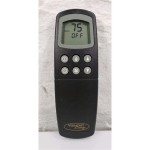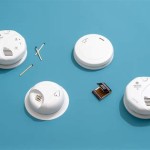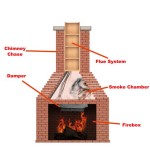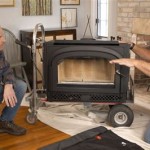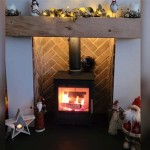Coal Burning Fireplace Inserts: A Comprehensive Overview
Coal burning fireplace inserts represent a specific category of heating appliances designed to fit within an existing fireplace opening. These inserts provide a more efficient and controlled method of burning coal for residential heating compared to traditional open fireplaces. This article will explore the features, benefits, installation considerations, and operational aspects of coal burning fireplace inserts.
Traditional open fireplaces, while aesthetically pleasing, are notoriously inefficient. A significant portion of the heat generated escapes up the chimney, resulting in minimal warming of the surrounding room and substantial energy waste. Coal burning fireplace inserts address this inefficiency by providing a contained combustion chamber with controlled airflow, allowing for more complete burning of the coal and directing the resulting heat into the room.
The construction of a coal burning fireplace insert typically involves a heavy-duty steel or cast iron firebox enclosed within a decorative outer shell. The firebox is designed to withstand the high temperatures associated with coal combustion. Air inlets and outlets, often with adjustable controls, regulate the flow of air into and out of the firebox, allowing the user to control the rate of combustion and the heat output.
The venting system of a coal burning insert is crucial for safe and efficient operation. It typically involves a stainless steel liner that runs from the insert's flue collar up through the existing chimney. This liner prevents the corrosive byproducts of coal combustion from damaging the chimney structure and ensures proper venting of the exhaust gases.
Enhanced Heating Efficiency
The primary advantage of a coal burning fireplace insert lies in its improved heating efficiency compared to an open fireplace. The enclosed firebox and controlled airflow allow for more complete combustion of the coal, extracting a greater percentage of its potential heat energy. This translates to more heat radiating into the room and less heat escaping up the chimney.
Many coal burning inserts are designed with features that further enhance heat transfer. These may include: convection blowers that circulate heated air into the room, radiant heat panels that radiate heat directly from the insert's surface, and catalytic combustors that reduce emissions and increase heat output by burning off unburned gases.
The increased efficiency of a coal burning insert can significantly reduce heating costs, especially in regions where coal is readily available and affordable. By burning coal more efficiently, homeowners can reduce their reliance on other heating fuels such as oil, gas, or electricity.
The efficiency of a coal burning insert is typically measured by its heating efficiency rating. This rating indicates the percentage of the fuel's energy that is converted into usable heat. Higher efficiency ratings indicate a more efficient appliance.
Operational Considerations and Fuel Management
Operating a coal burning fireplace insert requires a different approach compared to burning wood. Coal burns hotter and longer than wood, and it produces different types of emissions. Therefore, it is crucial to understand the proper techniques for loading, lighting, and maintaining a coal fire.
Coal should be loaded carefully into the firebox, avoiding overfilling. The grate within the firebox allows air to circulate beneath the coal bed, promoting combustion. The ash produced by burning coal needs to be removed regularly to maintain proper airflow and prevent ash buildup, which can impede combustion.
Different types of coal are available, each with varying heat output, ash content, and burning characteristics. Anthracite coal is a hard, dense coal with a high carbon content and low ash content. Bituminous coal is a softer coal with a higher ash content and a slightly lower heat output. The choice of coal depends on the specific insert model and the desired heating characteristics.
Maintaining a consistent temperature in a coal burning insert requires careful monitoring and adjustment of the air controls. The air controls regulate the amount of air entering the firebox, which in turn affects the rate of combustion and the heat output. Adjusting the air controls allows the user to fine-tune the fire to achieve the desired temperature and burn time.
Safety is paramount when operating a coal burning fireplace insert. It is essential to install and maintain a carbon monoxide detector to alert occupants to the presence of this odorless, colorless gas. Regular chimney inspections and cleanings are also necessary to ensure proper venting and prevent chimney fires.
Installation and Safety Standards
The installation of a coal burning fireplace insert should be performed by a qualified professional who is familiar with local building codes and safety regulations. Proper installation is critical for ensuring the safe and efficient operation of the insert.
The installation process typically involves preparing the existing fireplace opening, installing the stainless steel chimney liner, and connecting the insert to the liner. The insert must be properly sealed to prevent air leaks and ensure that all combustion byproducts are vented up the chimney.
Building codes often require specific clearances around the insert to combustible materials. These clearances are designed to prevent overheating and reduce the risk of fire. The insert should be installed according to the manufacturer's instructions and in compliance with all applicable codes.
Many coal burning fireplace inserts are tested and certified by independent testing laboratories, such as Underwriters Laboratories (UL) or Intertek (ETL). These certifications indicate that the insert meets specific safety and performance standards. Choosing a certified insert provides assurance that it has been rigorously tested and meets industry standards.
Regular maintenance is essential for ensuring the longevity and safe operation of a coal burning fireplace insert. This includes cleaning the chimney regularly, inspecting the firebox and venting system for damage, and replacing worn parts as needed. Proper maintenance can prevent costly repairs and extend the life of the insert.
Coal burning fireplace inserts offer a viable option for homeowners seeking an efficient and reliable source of heat. By understanding the features, benefits, operational considerations, and installation requirements of these appliances, homeowners can make informed decisions about whether a coal burning insert is the right choice for their heating needs.

Belmont Small Gas Insert

Fireplaces Inserts Hillside Acres Stoves Coal Wood Propane

Hitzer 983 Fireplace Insert

Fireplaces Inserts Hillside Acres Stoves Coal Wood Propane

Fireplace Insert For Hitzer

Keystoker Hf 70 90 Coal Insert By Obadiah S Woodstoves

Elite Fireplace Insert Legacy Stoves Coal Stove

Fireplace Insert

Hitzer 503 Ez Flo Hopper Fed Fireplace Insert The Coal

Fireplaces Inserts Hillside Acres Stoves Coal Wood Propane



